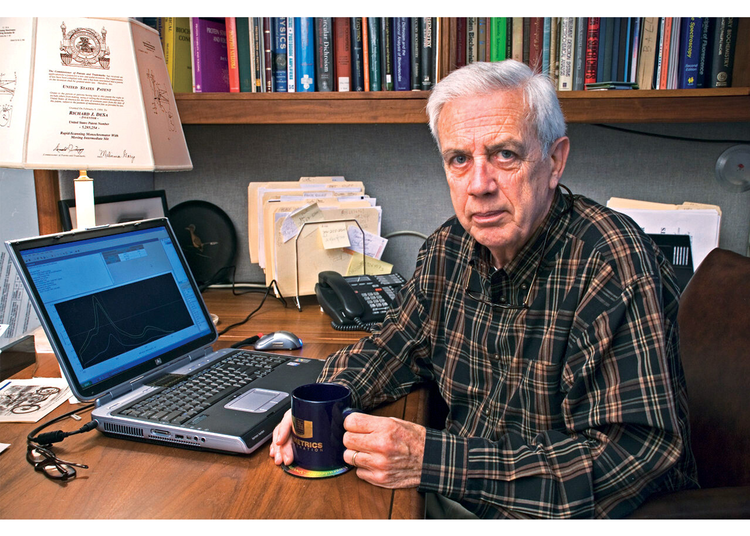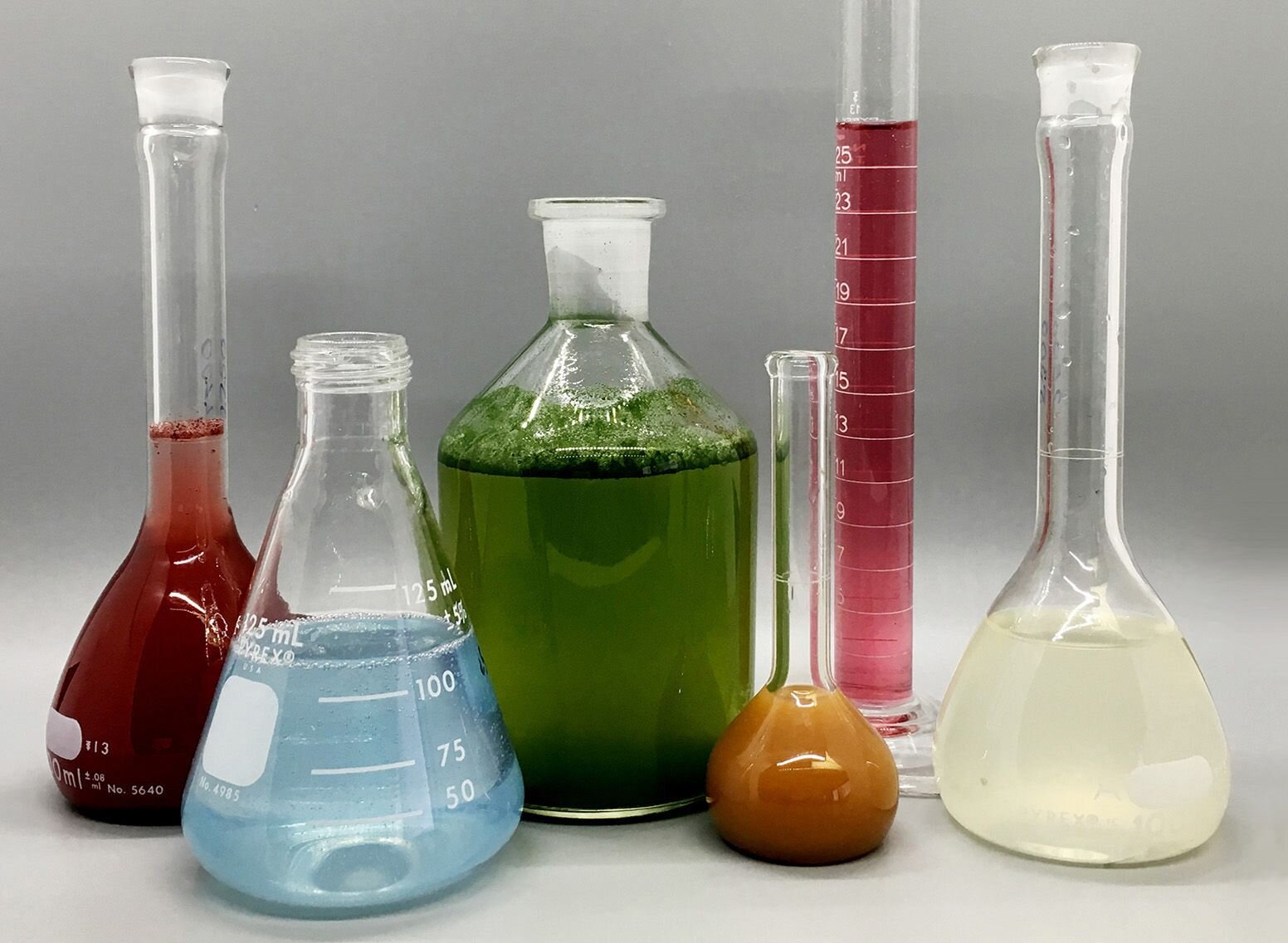The Ultimate Guide To Circularly Polarized Luminescence
Wiki Article
More About Circularly Polarized Luminescence
Table of ContentsWhat Does Circular Dichroism Mean?Uv/vis/nir Fundamentals ExplainedThe Basic Principles Of Circularly Polarized Luminescence Our Circularly Polarized Luminescence PDFsThe 3-Minute Rule for Uv/visHow Uv/vis/nir can Save You Time, Stress, and Money.The Best Guide To Circularly Polarized LuminescenceCircularly Polarized Luminescence Fundamentals ExplainedThe 4-Minute Rule for Circular DichroismUv/vis for DummiesGet This Report on Circular DichroismThe Single Strategy To Use For Circularly Polarized LuminescenceThe Greatest Guide To Spectrophotometers
It is then scanned through the sample and the recommendation solutions. Portions of the incident wavelengths are transmitted through, or shown from, the sample and the reference. Electronic circuits transform the relative currents into direct transmission percentages and/or absorbance/concentration worths.The transmission of a recommendation substance is set as a baseline (information) value, so the transmission of all other compounds are recorded relative to the initial "zeroed" compound. The spectrophotometer then converts the transmission ratio into 'absorbency', the concentration of particular components of the test sample relative to the initial compound.
Because samples in these applications are not easily available in big quantities, they are specifically matched to being evaluated in this non-destructive method. In addition, valuable sample can be saved by making use of a micro-volume platform where as little as 1u, L of sample is required for complete analyses. A short explanation of the treatment of spectrophotometry includes comparing the absorbency of a blank sample that does not include a colored substance to a sample which contains a colored substance.
Circular Dichroism Things To Know Before You Buy
In biochemical experiments, a chemical and/or physical residential or commercial property is picked and the procedure that is utilized specifies to that property in order to derive more details about the sample, such as the quantity, purity, enzyme activity, and so on. Spectrophotometry can be used for a variety of methods such as figuring out optimal wavelength absorbance of samples, figuring out optimal p, H for absorbance of samples, determining concentrations of unidentified samples, and determining the p, Ka of numerous samples.: 21119 Spectrophotometry is likewise a useful process for protein purification and can likewise be utilized as an approach to produce optical assays of a substance.It is possible to understand the concentrations of a two component mixture using the absorption spectra of the standard services of each element. To do this, it is essential to understand the extinction coefficient of this mixture at 2 wave lengths and the termination coefficients of options that contain the recognized weights of the two components.

The Spectrophotometers PDFs
A lot of spectrophotometers are used in the UV and visible regions of the spectrum, and a few of these instruments likewise operate into the near-infrared region as well. The concentration of a protein can be approximated by determining the OD at 280 nm due to the presence of tryptophan, tyrosine and phenylalanine (https://padlet.com/julieanndesalorenz30606/olis-clarity-srqqvp7768okh664).Nucleic acid contamination can likewise interfere. This method requires a spectrophotometer capable of determining in the UV region with quartz cuvettes.: 135 Ultraviolet-visible (UV-vis) spectroscopy involves energy levels that thrill electronic shifts. Absorption of UV-vis light excites particles that remain in ground-states to their excited-states. Visible area 400700 nm spectrophotometry is utilized extensively in colorimetry science.
20. 8 O.D. Ink makers, printing companies, fabrics vendors, and a lot more, need the information provided through colorimetry. They take readings in the region of every 520 nanometers along the noticeable area, and produce a spectral reflectance curve or a data stream for alternative presentations. These curves can be used to check a brand-new batch of colorant to check if it makes a match to specs, e.
Top Guidelines Of Circularly Polarized Luminescence
Traditional visible region spectrophotometers can not discover if a colorant or the base product has fluorescence. This can make it difficult to handle color issues if for example one or more of the printing inks is fluorescent. Where a colorant includes fluorescence, a bi-spectral fluorescent spectrophotometer is utilized (https://www.magcloud.com/user/olisclarity1). There are 2 major setups for visual spectrum spectrophotometers, d/8 (spherical) and 0/45.Researchers utilize this instrument to measure the quantity of substances in a sample. In the case of printing measurements 2 alternative settings are typically used- without/with uv filter to control better the impact of uv brighteners within the paper stock.
Unknown Facts About Circular Dichroism
Some applications need little volume measurements which can be carried out with micro-volume platforms. As explained in the applications area, spectrophotometry can be utilized in both qualitative and quantitative analysis of DNA, RNA, and proteins. Qualitative analysis can be utilized and spectrophotometers are used to record spectra of substances by scanning broad wavelength areas to figure out the absorbance properties (the intensity of the color) of the compound at each wavelength.
The Single Strategy To Use For Circular Dichroism
One major element is the kind of photosensors that are readily available for different spectral regions, however infrared measurement is also tough since practically whatever gives off IR as thermal radiation, especially at wavelengths beyond about 5 m. Another complication is that numerous materials such as glass and plastic soak up infrared, making it incompatible as an optical medium.2013. p. 13. Allen, DW; Cooksey, C; Tsai, BK (Nov 13, 2009). "Spectrophotometry". Retrieved Dec 23, 2018. Ninfa AJ, Ballou DP, Benore M (2010 ). Fundamental Lab Methods for Biochemistry and Biotechnology (2nd ed.). Hoboken: Wiley & Sons. ISBN 9780470087664. OCLC 488246403. Schwedt G (1997 ). The important guide to analytical chemistry.
Oke, J. B.; Gunn, J. E.
The 10-Minute Rule for Circularly Polarized Luminescence

Ninfa AJ, Ballou DP, Benore M (2015 ). Basic Laboratory Techniques for Biochemistry and Biotechnology (3, rev. ed.). UV/Vis/NIR. Lab Equipment.
Circular Dichroism Can Be Fun For Everyone
"Applied Spectrophotometry: Analysis of a Biochemical Mixture". Biochemistry and Molecular Biology Education. Journal of Biochemistry Education.What Does Uv/vis Mean?
U.S. Department of Commerce National Bureau of Standards special publication; 378. Washington, D.C.: U.S. National Bureau of Standards.The process starts with a controlled source of light that illuminates the analyzed sample. When it comes to reflection, as this light connects with the sample, some is absorbed or produced. The released light travels to the detector, which is analyzed, quantified, and presented as industry-standard color scales and indices.
All terms are evaluated over the noticeable spectrum from 400 to 700 nm. In the case of transmission, when the light communicates with the sample, it is either absorbed, shown, or transferred.
Circular Dichroism for Dummies
Examples consist of APHA (American Public Health Association) for watercolor and pureness analysis, ASTM D1500 for petrochemical color analysis, edible oil indices utilized in food, and color analyses of beverages. All terms are evaluated over the visible spectrum from 400 to 700 nm.Image Credit: Matej Kastelic/ Dr. Arnold J. Beckman and his associates at the National Technologies Laboratories first invented the spectrophotometer in 1940. In 1935 Beckman established the company, and the discovery of the spectrophotometer was their most ground-breaking invention.
Circularly Polarized Luminescence Things To Know Before You Buy
99% precision. Gradually, researchers kept improving the spectrophotometer design to enhance its performance. For example, the UV abilities of the model B spectrophotometer were enhanced by replacing the glass prism with a quartz prism. Eventually, the Design DU was produced, consisting of a hydrogen light and other enhancements. This instrument was utilized in industrial labs, clinics, and chemistry and biochemistry departments.Generally, a spectrophotometer is made up of 2 instruments, namely, a spectrometer and a photometer. A fundamental spectrophotometer contains a light source, a monochromator, a collimator for straight light beam transmission, a cuvette to put a sample, and a photoelectric detector.
The Ultimate Guide To Circularly Polarized Luminescence
There are various kinds of spectrophotometers in numerous shapes additional info and sizes, each with its own purpose or performance. A spectrophotometer figures out just how much light is reflected by chemical elements. UV/Vis. It measures the distinction in light strength based upon the total amount of light presented to a sample and the quantity of light beam that travels through the sample solution
A spectrophotometer is used to identify the concentration of both colorless and colored solutes in an option. This instrument is utilized to determine the rate of a reaction.
Report this wiki page